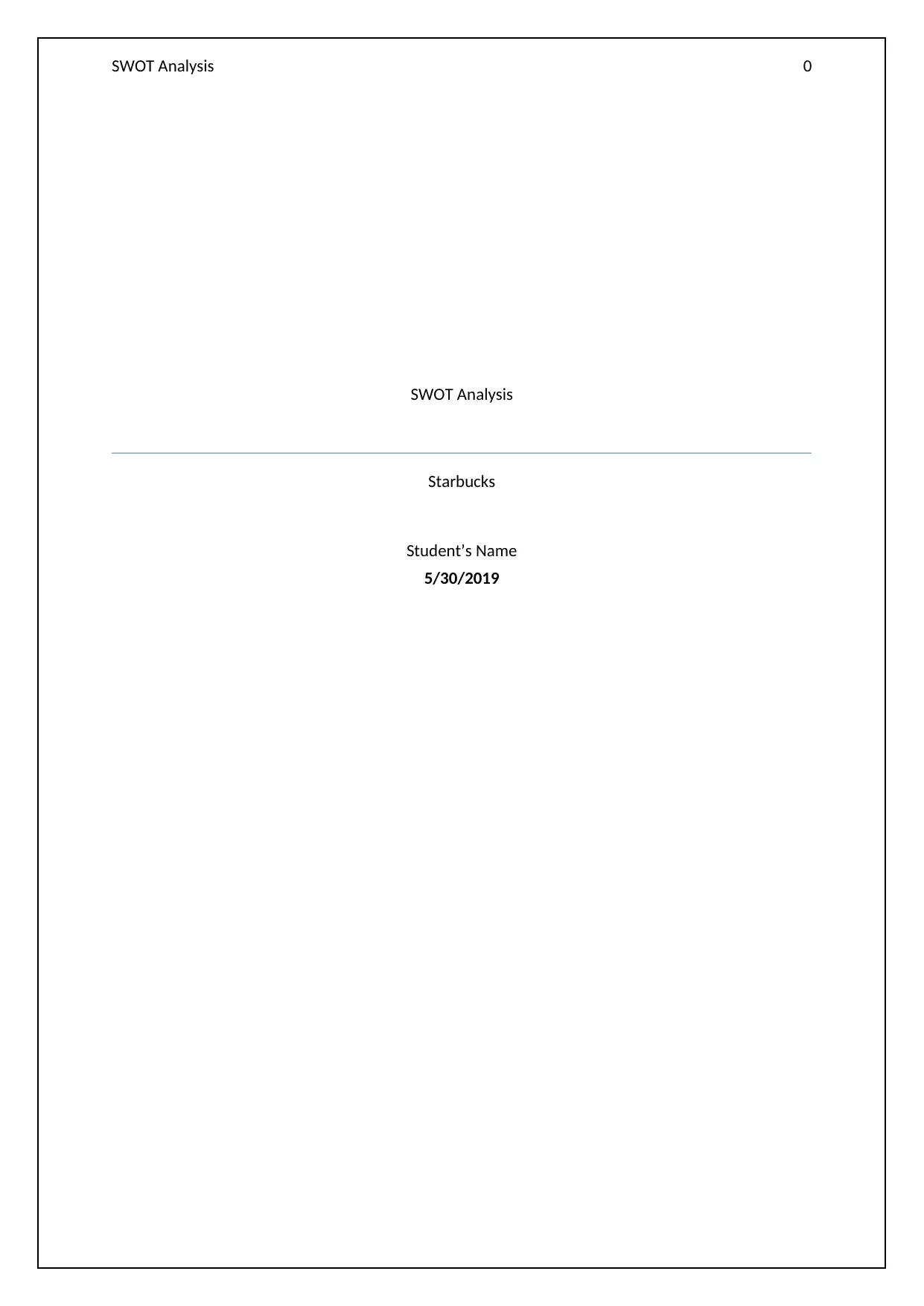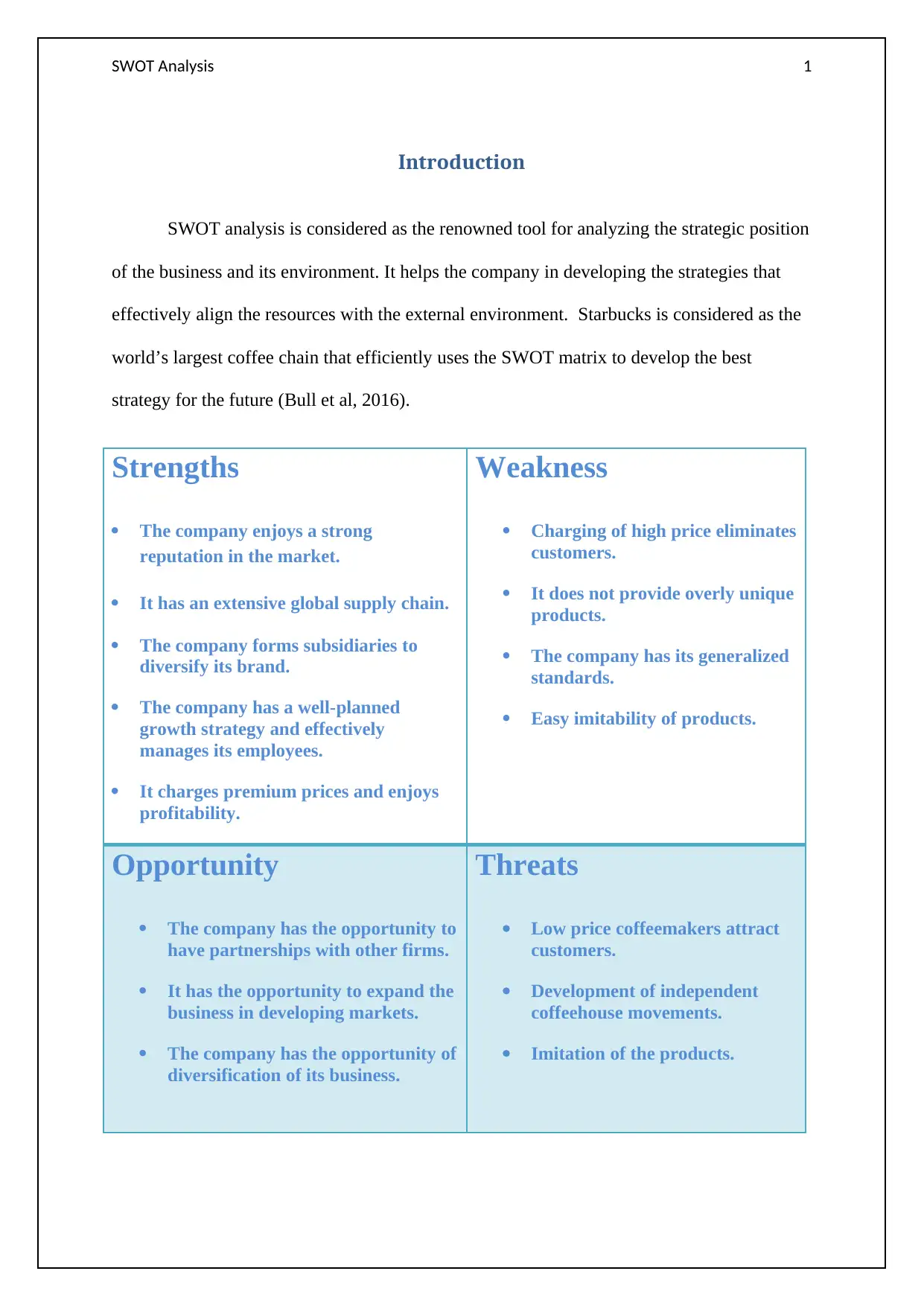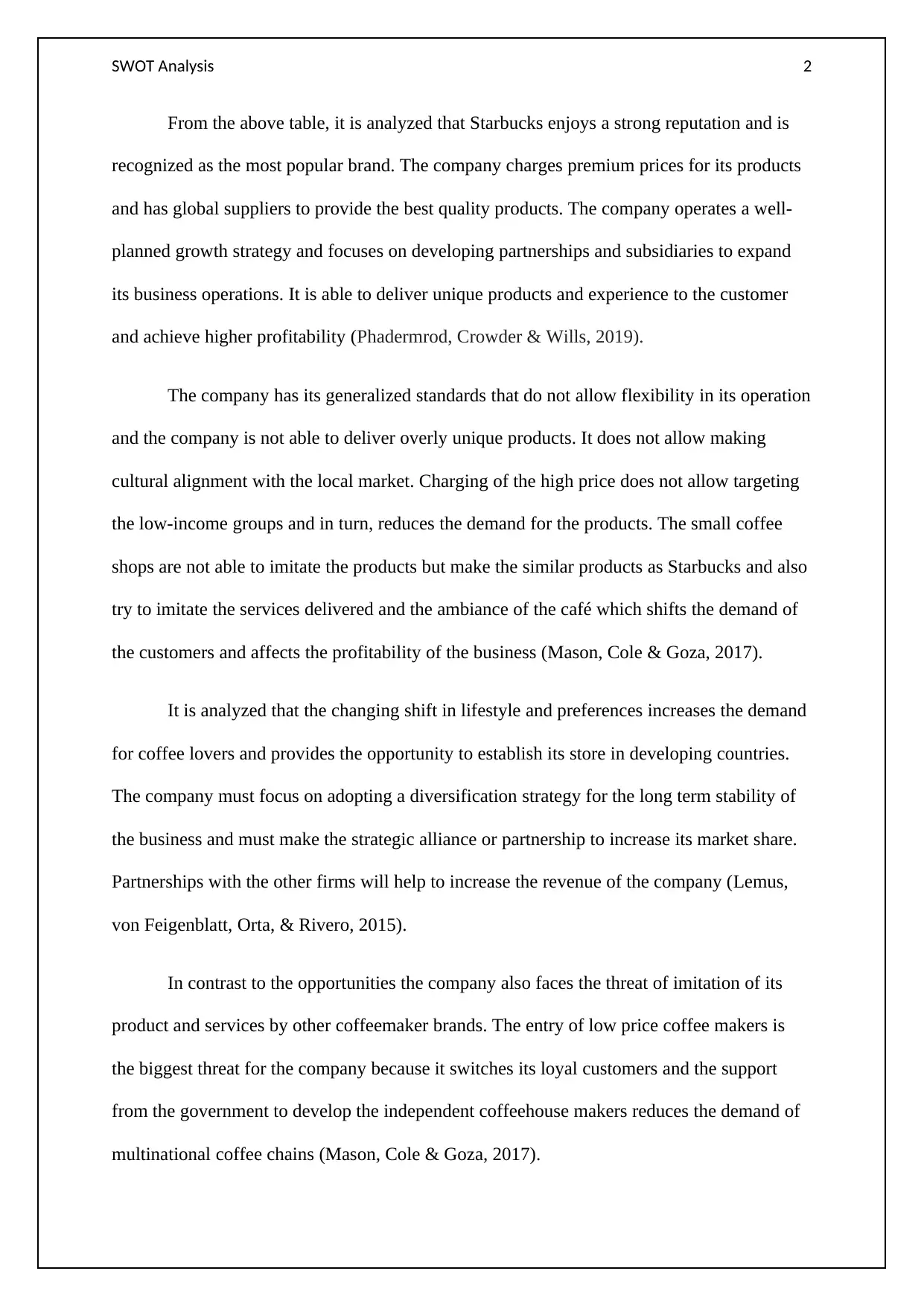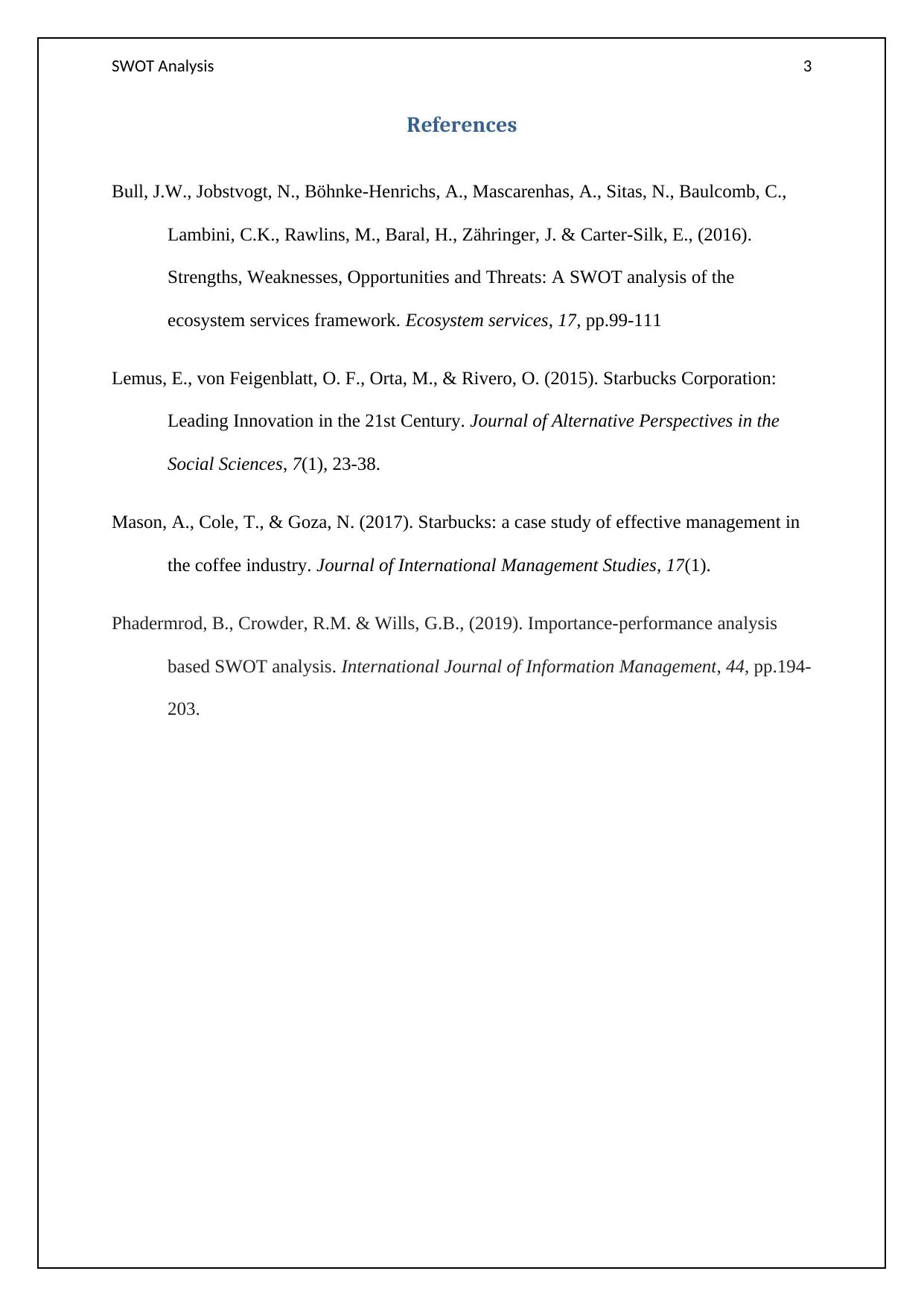Strategic Analysis of Starbucks: A Comprehensive SWOT Analysis Report
VerifiedAdded on 2023/03/31
|4
|662
|278
Report
AI Summary
This report presents a SWOT (Strengths, Weaknesses, Opportunities, and Threats) analysis of Starbucks, the world's largest coffee chain. It begins with an introduction to the SWOT framework, highlighting its importance in strategic business analysis. The analysis then delves into Starbucks' internal strengths, such as its strong brand reputation, extensive global supply chain, and well-planned growth strategy, as well as weaknesses including high prices and a lack of product uniqueness. The report also identifies external opportunities like partnerships and expansion into developing markets, alongside threats such as imitation from competitors and the rise of independent coffeehouses. The conclusion emphasizes the need for Starbucks to adapt its strategies to maintain its market position, including diversification and strategic alliances. References include several academic sources that support the analysis.
1 out of 4










![[object Object]](/_next/static/media/star-bottom.7253800d.svg)